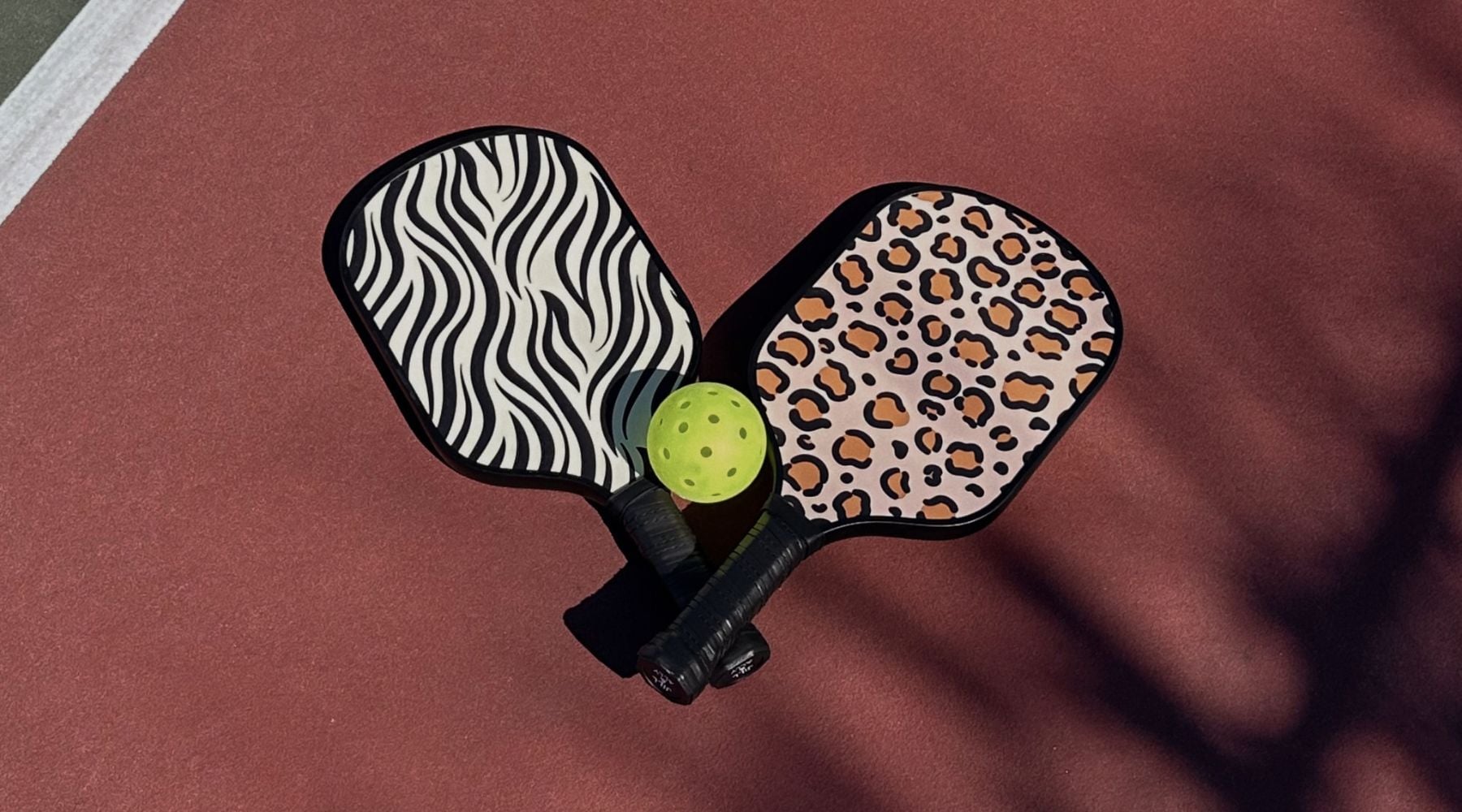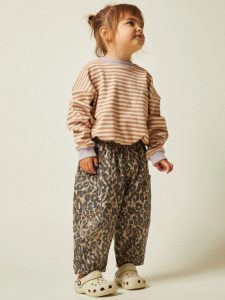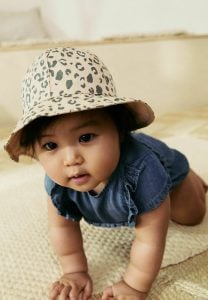
Leopard Print for Kids: A Guide to a Bold Pattern
This publication is also available in: Français
English (UK)
Deutsch
Italiano
Español
It is often imagined as exuberant, almost provocative. However, leopard print can also be soft, discreet, and playful. In children’s wardrobes, it makes a comeback in small touches, far from clichés. A wild pattern at first glance, it becomes, in the hands of curious parents and stylists, a canvas of graphic and textured play. But how to tame this pattern so laden with heritage without betraying the spirit of childhood? Here are some tips for measuring it, harmonizing it, and adapting it to all ages.
Why does leopard intrigue and divide?
By itself, leopard print evokes powerful imaginations: the glamour of the 80s, chic rock, and fashion disobedience. It is rarely neutral, even less so consensual. In the children’s world, it has long been avoided, considered too adult, too flashy. But by reinterpreting it with soft materials and comfortable cuts, it becomes a true testing ground. It’s not a pattern to impose, but to suggest, to subtly integrate into a silhouette that remains true to the spirit of childhood: free, curious, unexpected.
Daring to wear leopard from a young age
Introducing leopard print from early childhood requires a form of delicacy. It’s best to start small: a spotted bib, a pair of socks, a jersey bloomer. These smaller formats allow the pattern to be tamed without feeling overwhelming. The material makes all the difference: a leopard print on organic cotton gauze or stretchy jersey will be perceived as soft and reassuring. And the scale of the pattern plays a crucial role — the smaller and more spaced the spots, the more readable, fluid, and suitable the look for a baby’s world.
Statement piece or discreet detail?
As the child grows, the pattern can become bolder. Loose leopard print pants, a zip-up jacket lined like faux fur, leggings worn with a solid-colored sweater… The key is always in the balance. For the more timid (or the younger ones), the pattern remains an accent: a lining, a collar, a cap. For the more assertive, it becomes the central piece. But even then, the visual environment must remain calm: simple cuts, soft volumes, matte materials. Leopard doesn’t need embellishments — it already tells enough stories on its own.
Winning combinations
Leopard pairs better with natural tones than with saturated colors. Cream, clay, khaki, smoky brown, or dusty rose: soft hues that soothe the pattern without dulling it. One can also play with contrasting textures: the print on jersey leggings balances nicely with a chunky knit sweater or a boiled wool coat. The mistake to avoid: multiplying visual signals. No glitter, no loud logos, no layering of patterns. Leopard print is a strong punctuation mark — it needs space to breathe.
Styles and personalities: adapting leopard print for children
Every child has their own way of wearing clothing. Some like to be seen, while others prefer intimacy. Leopard can suit both. For the more expressive, it becomes a statement, almost a daily disguise — think of a spotted overalls worn with high-top sneakers, a velvet headband, or a light cape. For the more reserved, it takes the form of a secret detail: jacket lining, soft cotton scarf, small touches that add depth to a very minimalist silhouette. This is also what building a child’s style is about: suggesting, not imposing. Awakening curiosity rather than dictating an aesthetic.
Leopard print, when well introduced, is not just a trend. It becomes a complete visual vocabulary, a means of expression to explore according to desires, ages, and moods — a touch of spotted freedom, in a sense.









